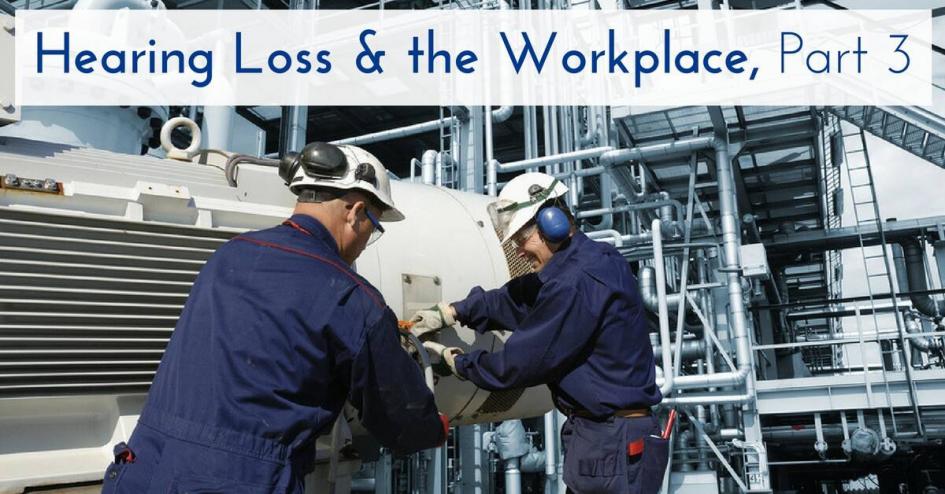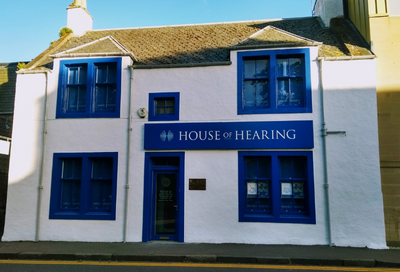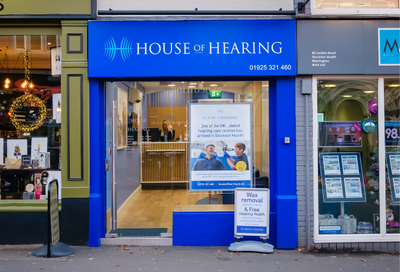
Hearing Loss & the Workplace, Part 3
Mar 05, 2017
In this post, we’ll take a look at how hearing loss can be affected by hazardous workplaces, such as factories, warehouses and construction sites. These workplaces are characterized by high levels of noise, and can often feature moving vehicles, industrial machinery and a variety of hazards. We’ll look at how to protect your hearing on the job, and what you can do to make your workplace safer.
Protecting your hearing
Occupational hearing loss affects around 17,000 workers in the UK. It is a particular risk for those working in noisy environments, including the heavy industries, construction, factories, farming, mining, transportation, the music industry, military and the emergency services. Sudden loud noises such as explosions, gunfire and even feedback in headphones can cause permanent and irreversible noise-induced hearing loss (NIHL) and tinnitus. Regular and constant exposure to loud noise sources, such as industrial machinery and power tools, can be just as dangerous. NIHL can build up over time, causing long-term damage to the sensitive inner ear and worsening existing conditions. As a rule of thumb, if you have to raise your voice to have a normal conversation at close range, then the workplace’s noise levels could be damaging your hearing. By law, employers must provide hearing protection for workers exposed to noise above 85 decibels (dB). To give you an idea of how loud that is, here are some common activities:- Normal conversation: 65dB
- Handsaw: 85dB
- Handheld power tools: 94dB
- Forklift truck: 99dB
- Hammer on a nail: 104dB
- Bulldozer: 107dB
- Jackhammer: 110dB
- Investing in quieter equipment – the Buy Quiet campaign is a useful resource for companies looking for quieter industrial tools and machinery.
- Using specialized “acoustic walls” - barriers and screens that surround loud machinery, and control direct exposure to excessive sounds.
- Providing personal hearing protection for workers exposed to more than 85dB, such as earmuffs and moulded earplugs. If you wear hearing aids, make sure that the hearing protectors do not exert pressure on your ear or hearing device.
- Displaying “high noise level” signs in appropriate areas, to remind employees to use hearing protection.
- Make sure employees switch between tasks that are noisy and quiet, and take regular breaks in a quiet area.
Keeping safe at work
Health and safety is important for all workers. For people with hearing loss who are working around heavy vehicles, machinery and other industrial hazards, visible alarm systems are essential. Although hearing aids can improve your hearing, you may still miss alarms, staff announcements and normal ‘warning noises’ like the sound of a truck reversing. You have a legal right to ask your employer to make reasonable adjustments to your workplace to help keep you safe.- All smoke, fire and carbon monoxide alarms should feature flashing or strobing lights. All emergency alarms, including in bathrooms and storerooms, should be both audible and visible.
- Employers should make sure that all employees are aware of evacuation procedures. Using a buddy system – where a co-worker is responsible for communicating dangers to the person with hearing loss – can also be useful, but it should not be used as the main emergency system.
- All dangerous machinery should feature warning lights when in operation.
- A pager, smartphone or two-way radio can also be useful for communication in noisy environments. Setting the device to vibrate also means that workers with hearing loss can be alerted immediately to messages.
- If the workplace uses tannoy (loudspeaker) systems for staff announcements, you can ask them to send the same message to your pager or smartphone. This ensures that workers with hearing loss can be aware of all announcements.
- Vehicles should move on set paths through the workplace, marked by paint, industrial tape or barriers. Vehicles should feature flashing or strobing lights when they move. Mirrors should be installed at blind corners along the route, to make sure you can see vehicles at all times.
- An employee with hearing loss may also wear a coloured hardhat or hi-visibility jacket to remind other coworkers that they may not be able to hear alarms and vehicles. However this should be at the discretion of the worker, and not enforced by an employer.
Our Clinics
All House of Hearing clinics are in town centre locations and accessible to public transport and parking. Home visits also available if mobility is an issue.


.png)
.png)
.png)

.png)
